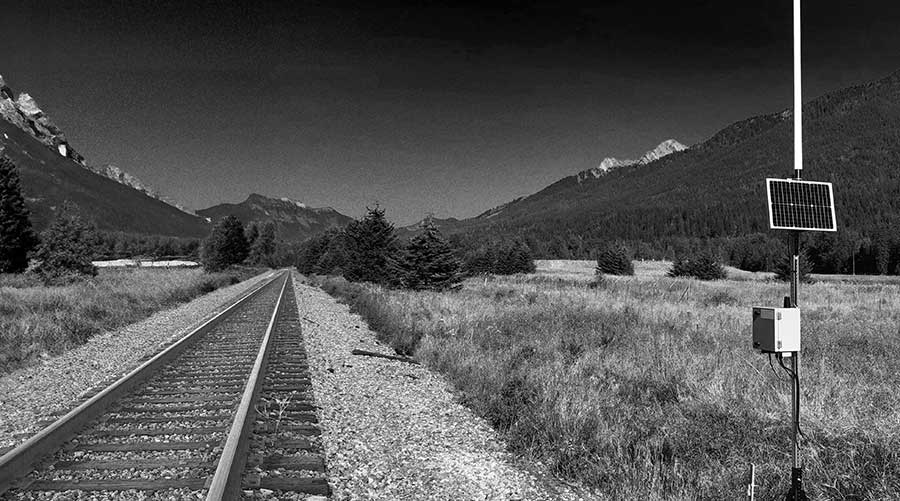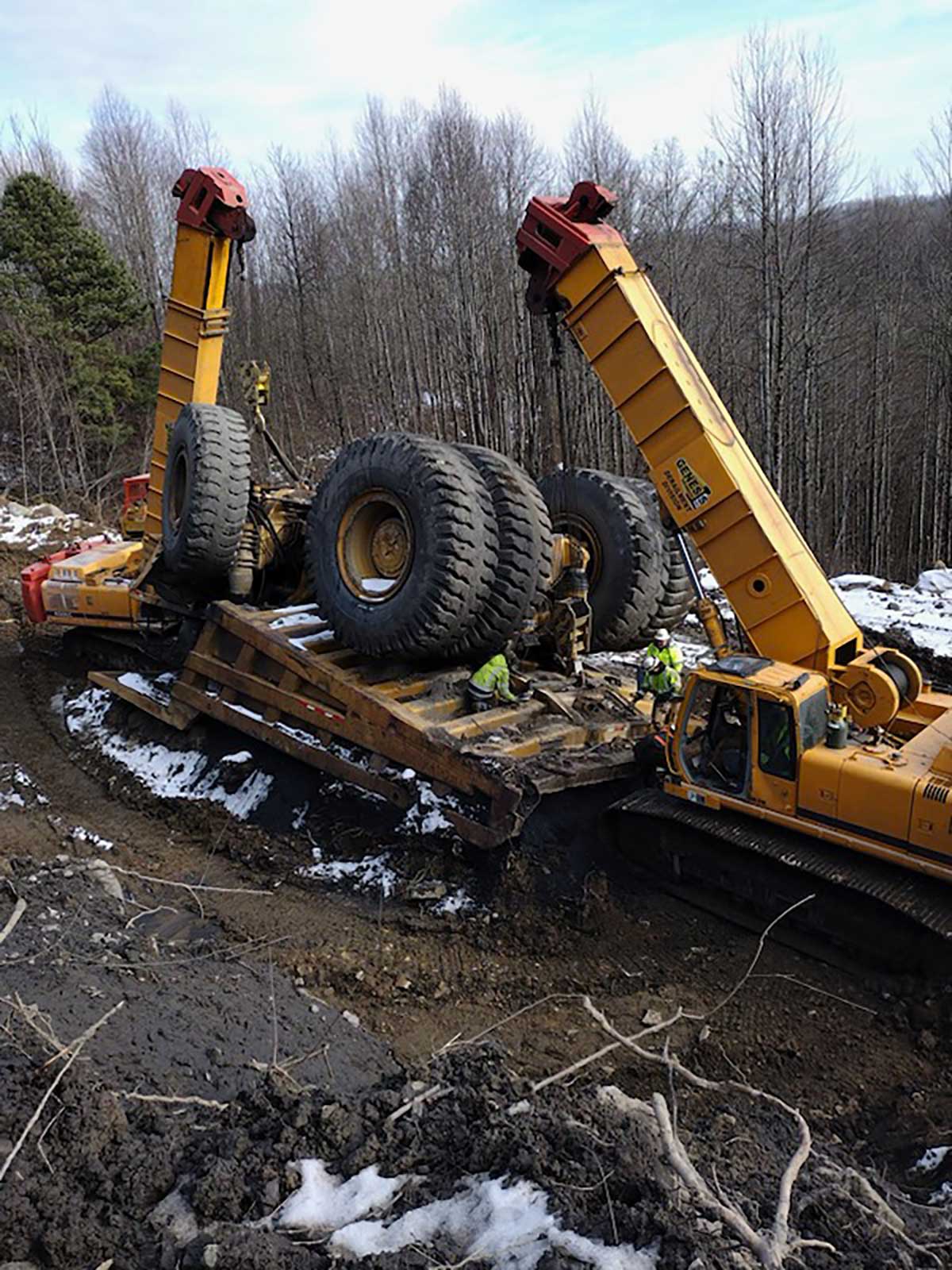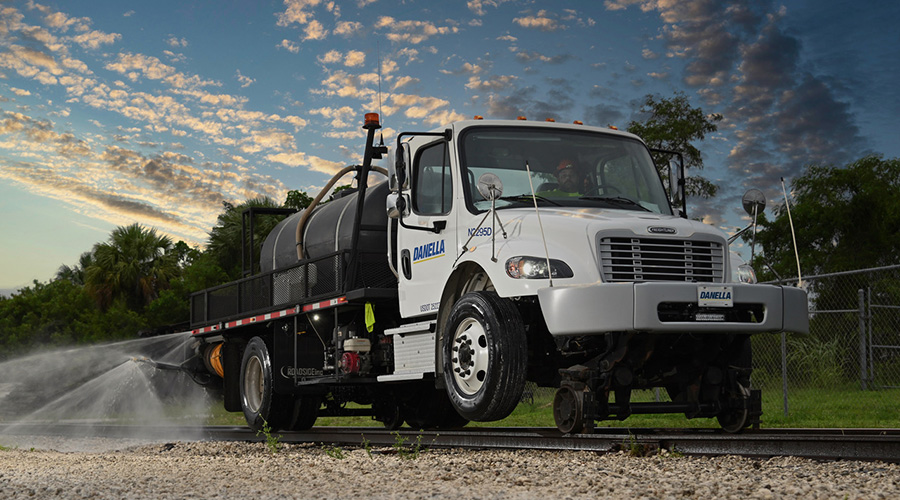Stay updated on news, articles and information for the rail industry
June 2024
Rail News: MOW
Product/service update: Derailment prevention and recovery

Compiled by Pat Foran, Editor-in-Chief
Derailment prevention isn’t just a top priority for maintenance-of-way planners. It’s a top railroad industry priority. It’s a planning thing. A management thing. An execution thing. A commitment thing.
It’s also a product, equipment and service thing.
We recently reached out to a sampling of suppliers in the derailment prevention and recovery space. We asked: What’s new? What’s tried and true? Emailed responses from three companies follow.
BossPac Technologies
Undetected rail breaks can result in significant revenue losses, environmental impacts and safety risks for the public and crew. About 40% of the Class I network is non-signalized (dark territory), and rail breaks can go undetected, BossPac Technologies officials said.
Installed on the wayside, BossPac’s Boss Rail Sensors (BRS) are designed as an economical option to monitor for rail breaks without signalized (also known as Centralized Traffic Control) infrastructure.
Each BRS is compact, solar-powered and communicates wirelessly. BRS units use DC current to measure the integrity of a rail. They operate in groups of 1 to 10 sensors, each positioned one mile apart, where they transmit and receive low voltage signals through the rail. When one sensor detects a rail break, its group member sensors validate the reading, greatly reducing false positives, company officials said.
The sensors offer multiple options to wirelessly communicate data. A self-healing mesh network allows interconnectedness among network devices, ensuring continuous data flow even if some units are offline, company officials said.
Hot box detectors are integrated into this mesh network, serving as gateways to upload data to BossPac’s back-office. All BRS units are equipped with 4G LTE modems for data uploads to the back-office via LTE networks.
BossPac began installing BRS on Class Is in 2021 and so far has detected over 100 rail breaks, company officials said.
Genesis Rail Services

Genesis Rail Services offers mechanical, engineering, transportation and equipment services. The company is dedicated to the construction of reliable railroad infrastructure, supporting customers’ maintenance projects, responding to emergencies when necessary and providing specialized equipment, if need be, Genesis officials said.
Annually, the company responds to about 150 derailments. Response times vary depending on the destination, but Genesis’ crews typically reach dispatch locations within an hour of a call and immediately mobilize to the derailment site.
Genesis derailment equipment requires fewer support trucks and personnel when hauling them to the jobsite; large equipment can be set up in as little as 20 minutes, company officials said. In addition to handling the derailment cleanup, Genesis crews can repair the track at the same time and provide onsite inspections to help prevent future derailments.
3C Telemetry LLC

3C Telemetry LLC recently introduced the Onboard Wireless Hot Bearing Detection System for rail cars and locomotives. By leveraging advanced sensor technology and real-time data analytics, the system provides immediate alerts to locomotive operators and maintenance personnel, enabling “swift intervention and prevention of potential derailments or equipment damage,” company officials said.
Features include:
• Real-time monitoring — continuous monitoring of bearing temperatures ensures proactive detection of anomalies, minimizing downtime and enhancing operational efficiency, company officials said;
• Wireless connectivity — integration with onboard gateway systems via wireless communication protocols, enabling remote monitoring from control centers;
• Analytics — utilizing the company’s unique algorithms, the system provides tools to detect potential bearing failures based on live and historical data, allowing for proactive maintenance scheduling; and
• Scalability — the system is scalable to fit the needs of diverse railway fleets, from short lines to Class Is.
Email questions or comments to pat.foran@tradepress.com.


 2025 MOW Spending Report: Passenger-rail programs
2025 MOW Spending Report: Passenger-rail programs
 Gardner steps down as Amtrak CEO
Gardner steps down as Amtrak CEO
 Guest comment: Oliver Wyman’s David Hunt
Guest comment: Oliver Wyman’s David Hunt
 Women of Influence in Rail eBook
Women of Influence in Rail eBook
 railPrime
railPrime







